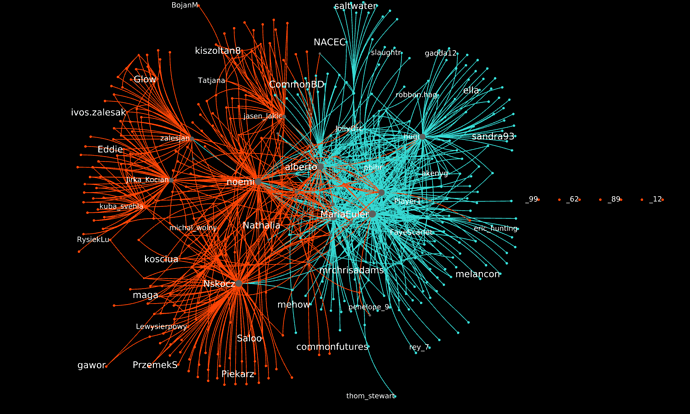This wiki is for inventorying the components of the stack (or suite?) as they are now.
1. Papers
2. Software
-
Discourse. The forum software hosting the conversations to become ethnographic corpora. Open source, JSON API-based, written in Ruby; we use a modified forked version.
-
Open Ethnographer (aka Annotator Store). A Ruby Engine for Discourse, supporting annotations to text, images and videos. Each annotation is stored in Discourse’s database. In SSNA, it is the facility used by ethnographer to code the corpus. Supports code management (merge, split, rename…) and generates codebooks automatically.
-
Graphryder (frontend, backend). Assembles data from discourse in the form of a SSN, and displays the result on a Javascript interactive dashboard on the web, accessible via browser (Example).
-
Python module. A small library of canned Python functions for data analysis using the Discourse APIs.
-
Rapid Social Networks. A Tulip project file (called a perspective) that allows rapid visualization of the social networks of conversations happening on Discourse. The semantic content is ignored.
-
Disgource. Not really a software application in itself, more the use of an existing application, Gource, to represent a coded conversation on Discourse in the form of a video animation. The Python library contains a function to generate a specific CVS file, which can then be passed onto Gource to generate the videos.
3. Instructionals and wikis
4. Videos, pictures
5. Datasets
The following datasets contain SSN data. They were generated by Edgeryders projects; they have the exact same structure. Metadata are provided in the DataPackage standard, and they were all published as open data, with a CC-BY license.
- OpenCare. A discussion on community-provided health and social care.
- POPREBEL. A discussion on how populist politics influences how people go about their lives, with a focus on Eastern Europe.
- NGI Forward. A discussion on the future of the Internet, and how human values get (or not) encoded in technical choice.

